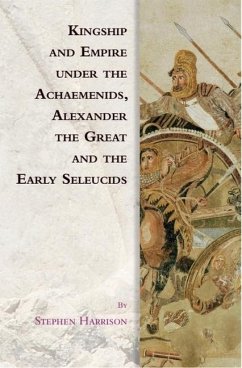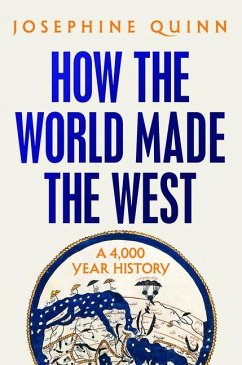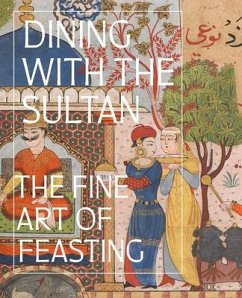
Princes, Dervishes and Dragons
The Tile Arcade from Safavid Isfahan (C. 1685-95)
Versandkostenfrei!
Versandfertig in über 4 Wochen

PAYBACK Punkte
81 °P sammeln!




Assembled digitally from worldwide collections, this Arcade of 36 colourful tile panels exposes for the first time religious themes as well as more traditional themes for architectural decoration, and adds a new work to the canon of seventeenth-century Persian art.
Lisa Golombek (Curator Emerita, Royal Ontario Museum, Department of World Cultures, Islamic Arts; PhD., U. of Michigan, 1968. At ROM since 1967) is Professor Emerita at the Department of Near and Middle Eastern Civilizations at the University of Toronto. She is author and co-author of five books and over 70 articles covering a wide range of topics in the field of Islamic arts, including architecture (The Timurid Architecture of Iran and Turan with D. Wilber, 1988, Princeton U. Press), ceramics, epigraphy, textiles, and Persian gardens. The author has extensive experience in fieldwork covering the areas of her research (Iran, Afghanistan, Central Asia) and many other countries in the Middle East. While she has published on the arts of the wider Islamic world, her main focus has been on the cultures of greater Iran, including Afghanistan and Central Asia. Her period of specialty was the fifteenth century, but since taking on the study of Safavid pottery, her interests have shifted to the pre-modern period in Iran (c. 1600-1900). The Isfahan Urban History Project, carried out in 1974-76, traced the historical growth of the city and laid the foundations for her later research on Safavid palaces. The hunt for tiles across the globe in order to re-create the Safavid tile arcade has led to investigation into the dispersal of the Iranian cultural heritage by dealers catering to demand from European markets in the late nineteenth century. This material forms a chapter unto itself in the book.
Produktdetails
- Verlag: Edinburgh University Press
- Seitenzahl: 312
- Erscheinungstermin: 31. März 2025
- Englisch
- Abmessung: 246mm x 173mm x 30mm
- Gewicht: 930g
- ISBN-13: 9781399538695
- ISBN-10: 1399538691
- Artikelnr.: 71245478
Herstellerkennzeichnung
Libri GmbH
Europaallee 1
36244 Bad Hersfeld
gpsr@libri.de
Für dieses Produkt wurde noch keine Bewertung abgegeben. Wir würden uns sehr freuen, wenn du die erste Bewertung schreibst!
Eine Bewertung schreiben
Eine Bewertung schreiben
Andere Kunden interessierten sich für











